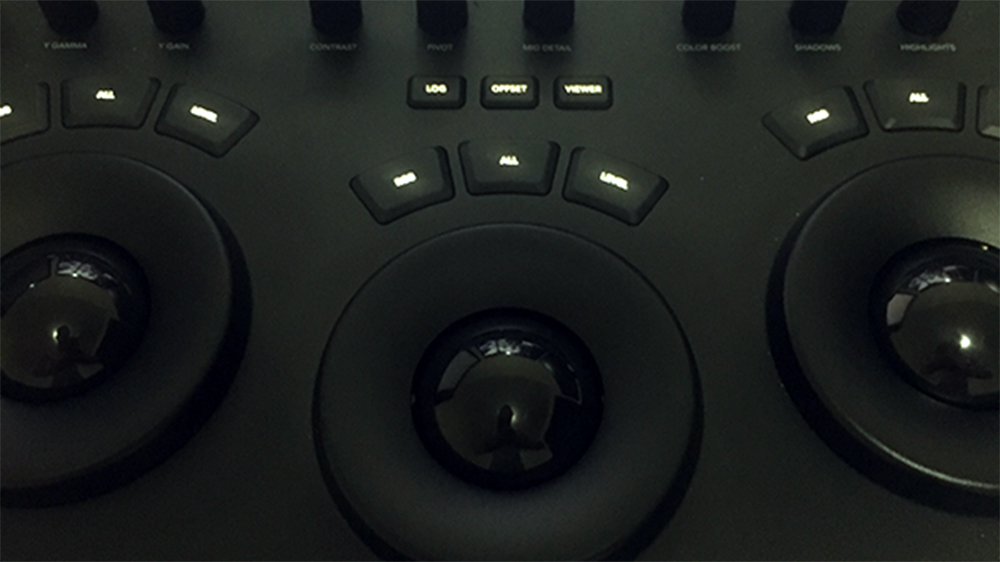What are the three balls on the colourist panel?
Ahhh the balls. Ok. Yes, we play with 3 balls on a colourist console, and they each have a spin-able ring around them. The balls affect the colour. The rings affect the brightness.
.
The left ball is for “lift” (shadows/blacks), the middle ball is for “gamma” (midtones/middle of the road colours that are neither dark or bright) and the right ball is “gain” (highlights/whites/bright colours). By moving a ball in a certain direction you can push one range of colours toward a different range of colours. For example moving the “lift” ball from left to right will push any yellowy shadows toward more bluey coloured shadows. Moving the “gamma” ball from left to right will make yellow midtones move toward blue (ie. taking some yellow out of skin tones and cooling it off toward blue). The left/right/up/down movement of the ball mirrors a vector scope. When I was starting out I drew a diagram like this below so that I could remember which way to push the balls! Quickly it becomes second nature. In the early days during some particularly busy grading weeks I had been known to go to sleep, eyes closed but moving my eyeballs around to make different colours in my dreams. Now there is a cool and weird colourist confession if I ever heard one!
.

.
Now for the rings. By moving each ring to the left, you wind it down/lessen the brightness of that parameter (either the shadows, mids, or highlights). By moving each right to the right you wind it up/crank it/brighten that parameter (either the shadows, mids, or highlights).
.
You can colour grade without a console and it’s balls/rings and just use a mouse. The software usually has little colourful ball diagrams so you can drag your mouse from left to right on the each ball and do it that way. The beautiful thing about a console however, is that it means that you can use your two hands to intuitively move and spin the balls and rings to get your desired effect. When you change one parameter it effects another eg. Lifting the shadows will slightly lift the midtones also. Everything flows and is connected. So by using your hands it really becomes more like an art form in my opinion, very instinctive and reactive and I really love this bit about grading.
.
Next time you’re in my suite, ask me for a spin!
Check out some of Angela Cerasi’s colour grade work here or via her remote colour grading company, Peachy Keen Colour, here.



